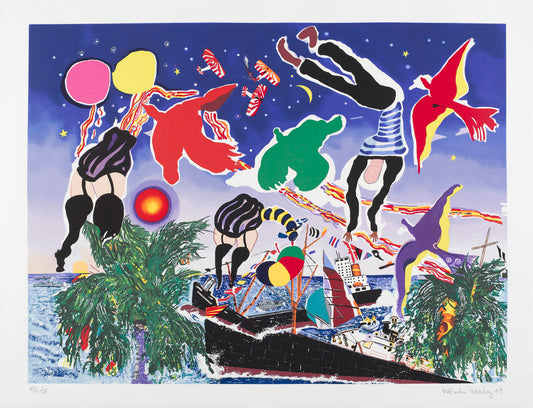Collection: Malcom Morley
Malcolm A. Morley (June 7, 1931 – June 1, 2018) was a British-American artist renowned for his pioneering work in various styles, including photorealism, expressionism, and abstraction. He won the inaugural Turner Prize in 1984 and is remembered as a significant figure in contemporary art, influencing multiple genres.
Morley was born in North London and had a tumultuous childhood. His family was displaced after their home was bombed during World War II, a traumatic event that left a lasting impact on him. As a teenager, he was sentenced to prison for housebreaking and petty theft, during which he read Lust for Life (1934) by Irving Stone, a book about Vincent van Gogh. This inspired him to pursue art. After his release for good behavior, he joined an artists' colony in St. Ives, Cornwall, and went on to study at the Camberwell School of Arts and later at the Royal College of Art (1955–1957).
Morley moved to New York City in 1958, where he immersed himself in the vibrant art scene, meeting notable artists like Barnett Newman, Cy Twombly, Roy Lichtenstein, and Andy Warhol. His first solo exhibition was held in 1964 at Kornblee Gallery. In the 1960s, Morley taught at Ohio State University and later at the School of Visual Arts and Stony Brook University.
He participated in major exhibitions like Documenta (1972, 1977) and the Carnegie International (1985). His 1983 retrospective at the Whitechapel Gallery in London led to his winning the Turner Prize the following year, marking a pivotal moment in his career. Morley went on to have solo exhibitions at institutions such as Tate Liverpool (1991), the Centre Georges Pompidou in Paris (1993), and the Hayward Gallery in London (2001).
In the 1980s, Morley bought a Methodist church in Bellport, Long Island, where he lived for the rest of his life. He became an American citizen in 1990 and was married to Brazilian artist Marcia Grostein in the early 1980s. Morley passed away in Bellport on June 1, 2018, just six days before his 87th birthday, leaving behind a legacy as a versatile and innovative artist.
Morley’s work, known for its exploration of diverse techniques and genres, remains influential in the art world. He is remembered for his unique artistic vision and contributions to contemporary painting.
-
Tankerton Bay
Vendor:Malcom MorleyRegular price $ 2,800.00Regular priceUnit price / per

